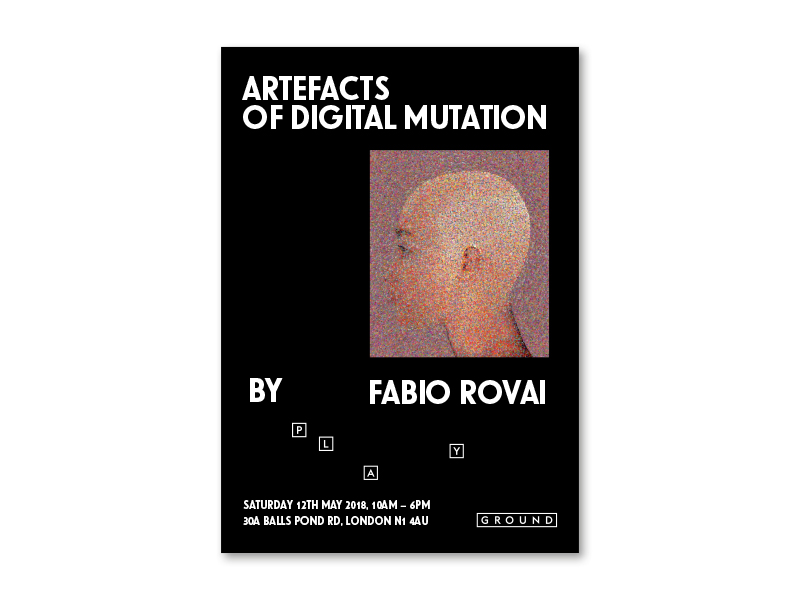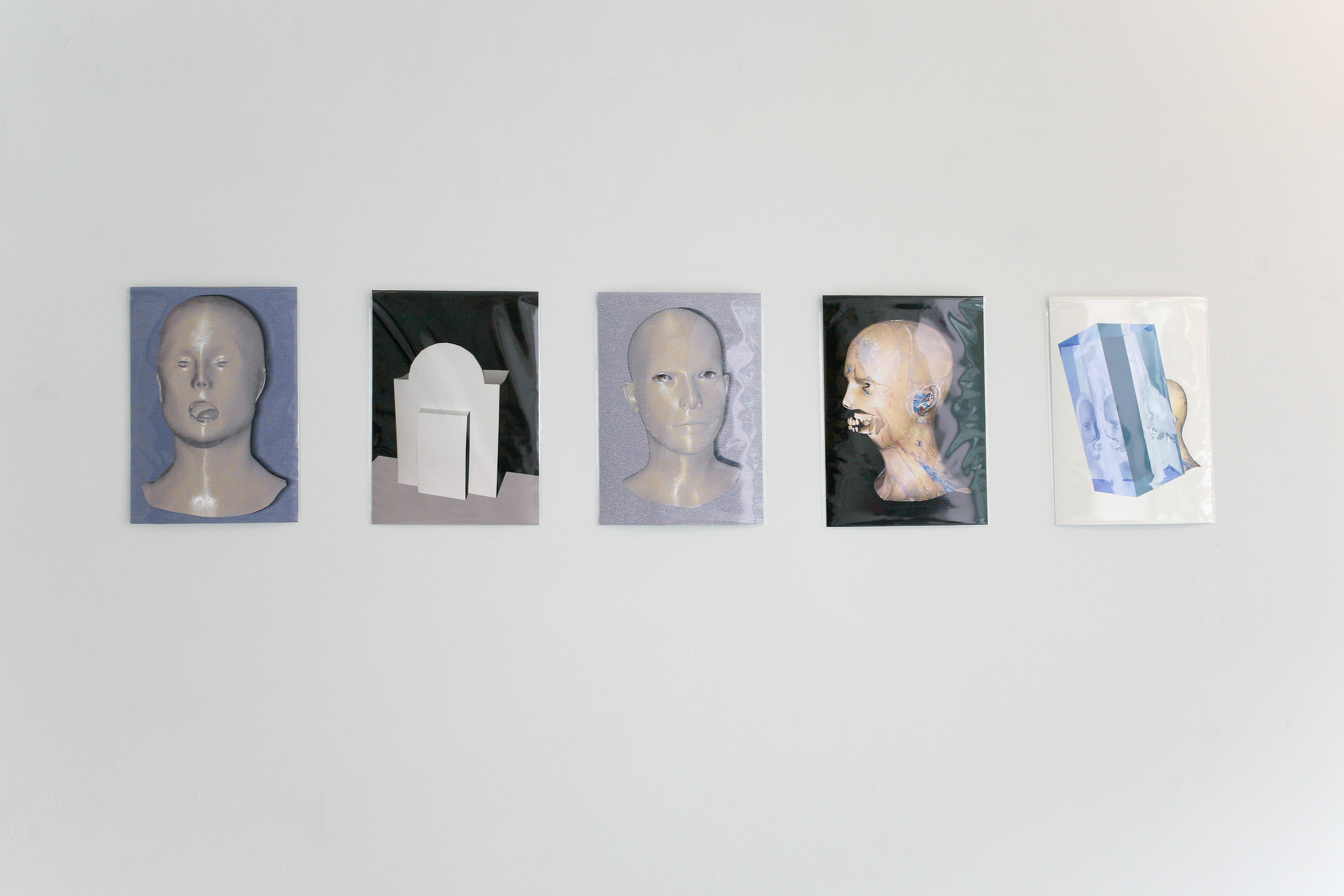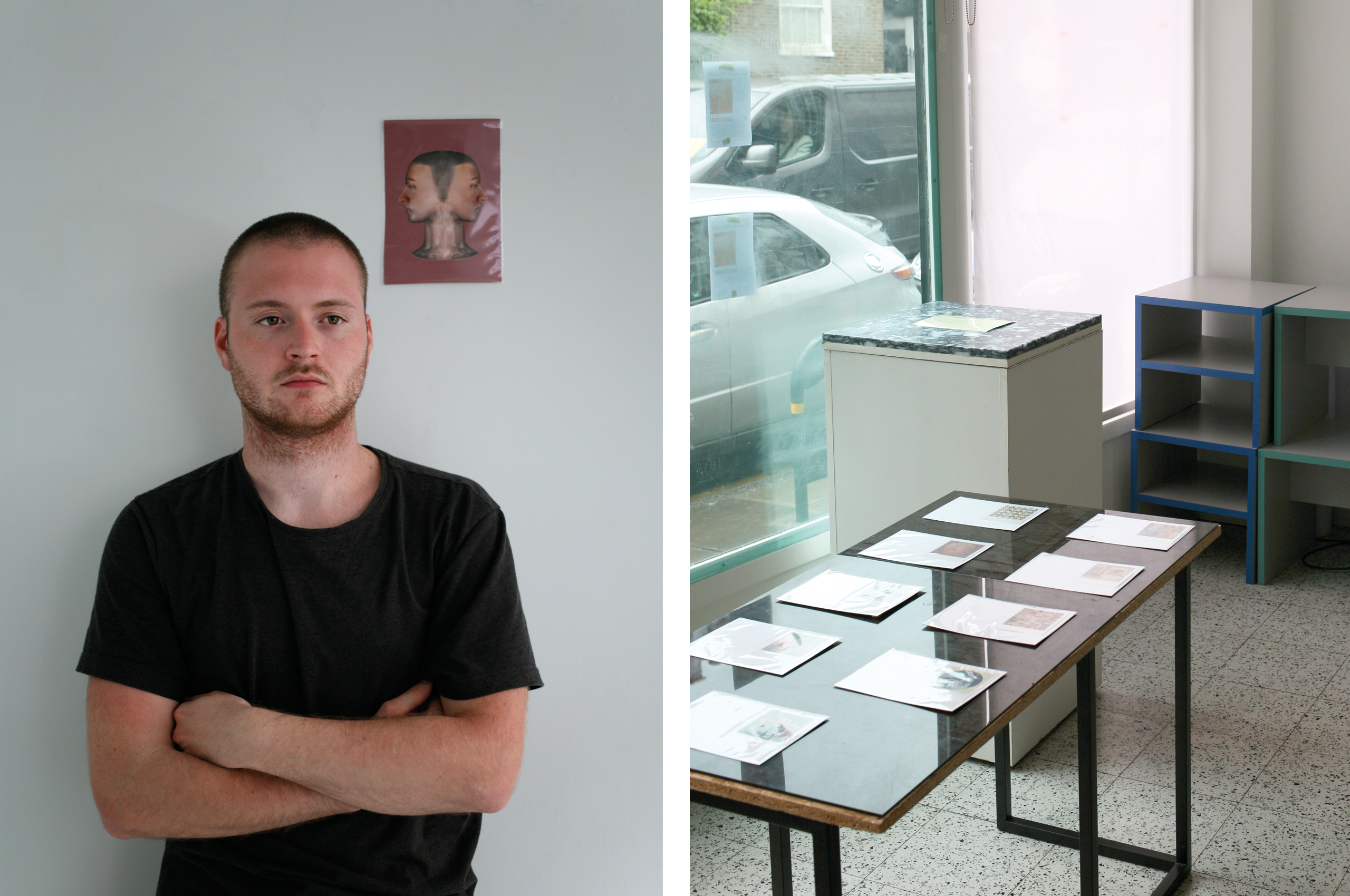Artist Rovai Fabio explored how F.s last discovery is changing our conception of the human history, having collected the majority of artefacts and highlighting in an exhibition how fundamental F.s research is to understand our past and the future.





EXHIBITION
Artefacts of Digital Mutation
— Fabio Rovai
12th May 2018
About the artist
Born in Italy, Fabio Rovai lives and works in London. His work has appeared in international publications and exhibitions, always characterised by grotesque gimmicks and a strong sense of melancholy. His current research focuses on anthropology and its contamination between different media and cultures.fabiorovai.com
Fabio Rovai about the exhibition
F. is considered one of the most famous Italian researchers and archaeologists, known for his unconventional application of some techniques of stratigraphic excavation. Artist Rovai Fabio explores how F.s last discovery is changing our conception of the human history, having collected the majority of artefacts and highlighting in an exhibition how fundamental F.s research is to understand our past and the future. The exhibition is set up with the purpose of showing F.s research and his collection of artefacts made during his last exploration, which is at the same time his most important discovery, and one he kept secret for the past two decades.
F.'s mysterious disappearance and his unwillingness to exhibit and sell his finds, made this project difficult to realise. F. did however agree to distribute a very limited amount of archaeological discoveries, yet the total number of unearthed artefacts is unknown. F.s historically most important contribution is undoubtedly his translations of the scriptures of an ancient civilisation, that had found a way to merge the human body with an advanced form of technology. "they found the way... we thought that internet was a thing, but it is not...it is our roots...” (F., 18) Attempts to find out more about F. proved almost impossible. Piecing together the little information we have, revealed that he had found a door in an unknown place, which he became obsessed with, rendering his character barely recognisable. He must have spent all his fortune trying to find a way to go through it. When he was finally able to do so, he started to collect everything he found beyond the door.
What we can understand from his last interview is that: there was something behind the door (he guesses a virus) that led to a mutation of a whole population. Mainly affecting their physical features, they seemed, in some ways, digitalised. F. established a chronological order of the development of the mutation, made possible with the digitalisation becoming more and more evident. He also described translations of original manuscripts, suggesting that the trigger of the mutations was “The Pursuit of the Perfect Identity through Social Networks” (F.,18) Only speculations exist about the end of this civilisation. No human remains were ever found. An existing theory is a melting process of some sort, with the digitalised humans having turned into data.
F. however claimed (and showed frescos that support his theory) that “digitalisation led to the deterioration of basic instincts – like eating – turning into mass extinction” (F.,18) With the disappearance of F. the location of the door will remain unknown
Download Press Release
